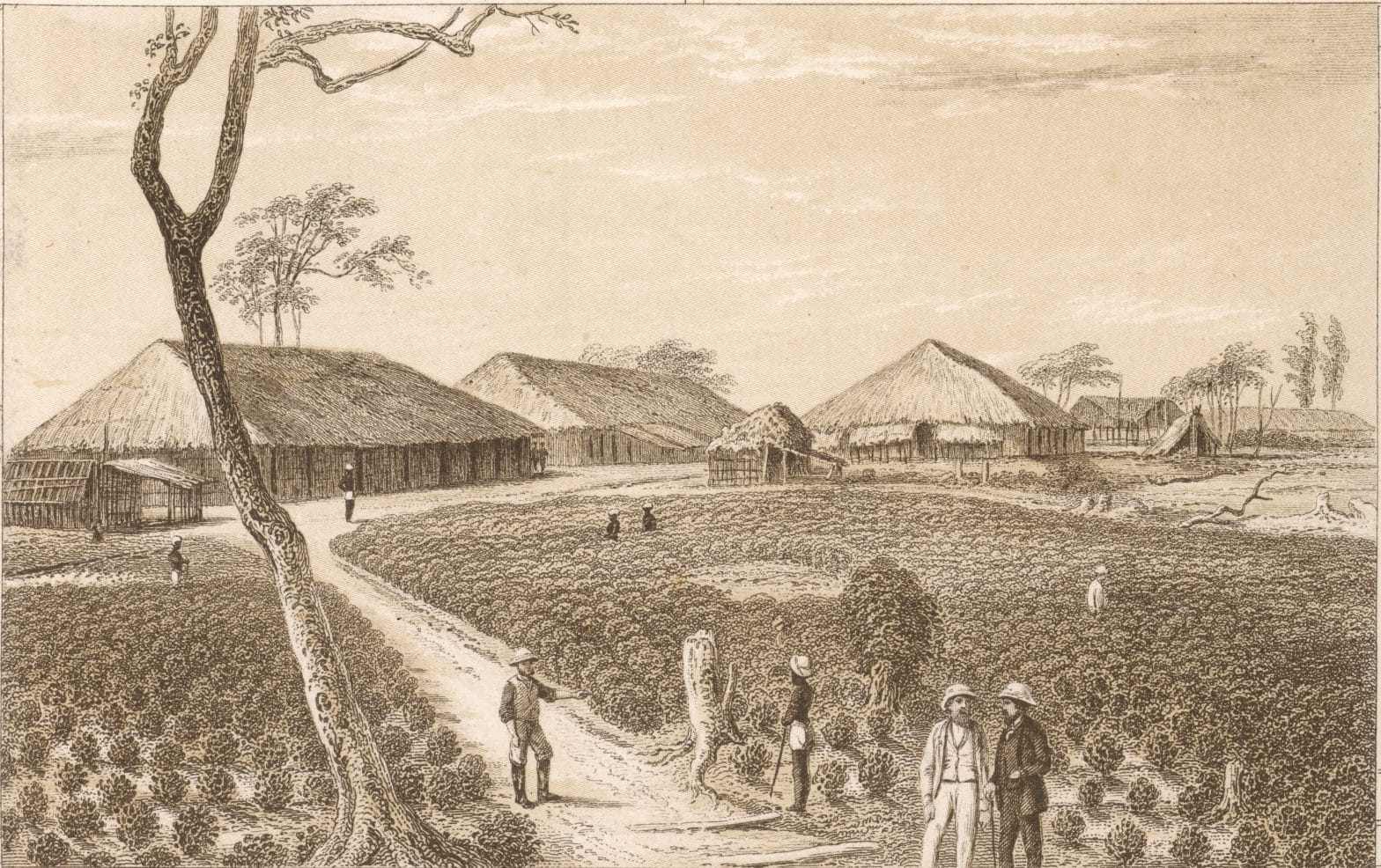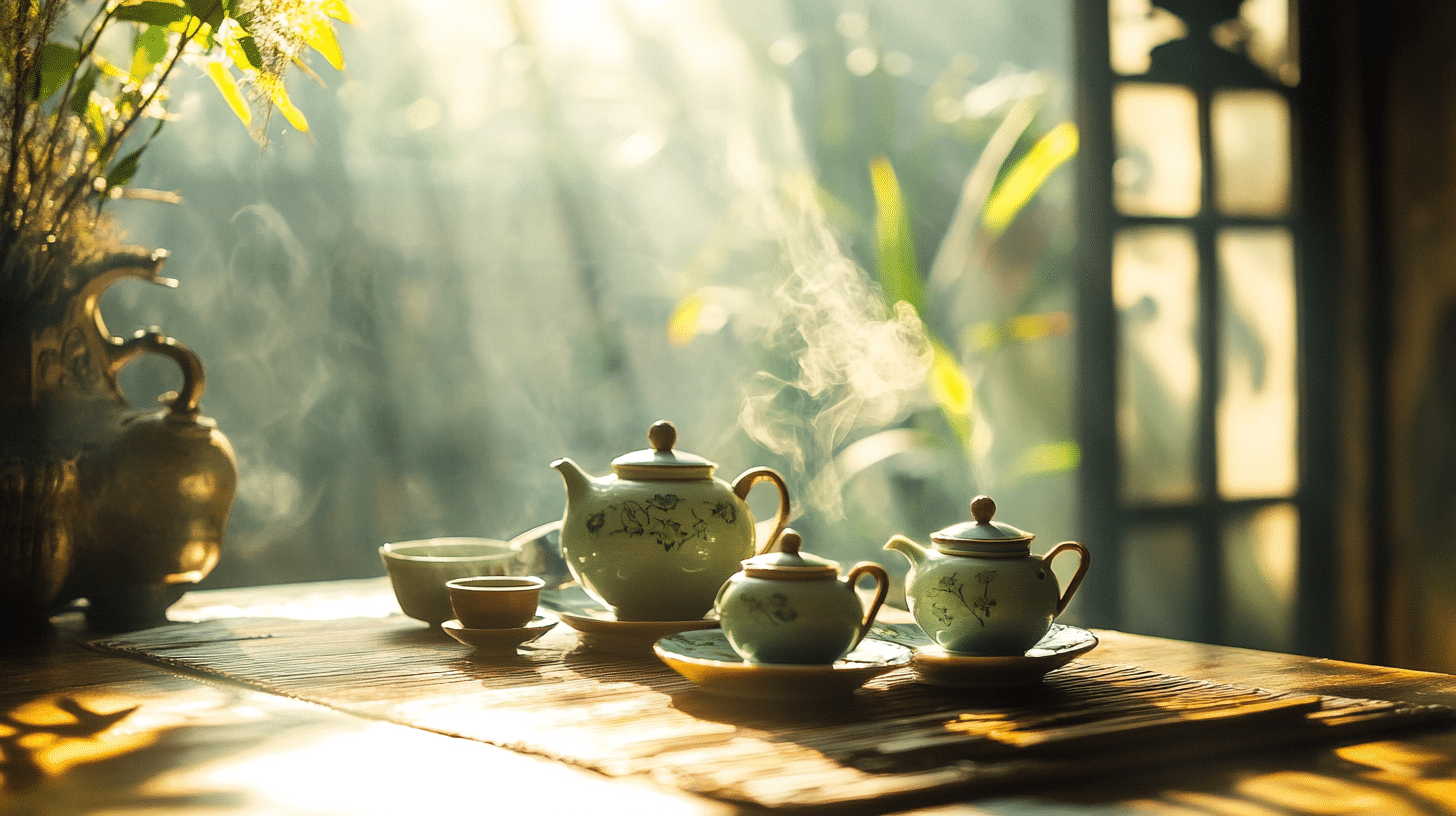Tea has been enjoyed for nearly 5,000 years, and from the very start it was found it to be a delicious, comforting beverage that was both medicinal and pleasing to the senses. The Chinese Emperor Shen-Nung, known as the “Divine Healer” is credited with discovering this delightful brew.
Legend has it that some tea leaves blew into a pot of water that the Emperor was boiling, and lo and behold, a new beverage was born! Shen-Nung also produced the first written record of tea in his medical book, the Pen Ts’ao, written in 2737 B.C. In it, the Chinese ruler noted that tea “quenches thirst. It lessens the desire for sleep. It gladdens and cheers the heart.”
Another legend explaining tea’s origins involves Dharma, the father of Zen Buddhism. According to legend, Dharma traveled from India to China in A.D. 520. There, he demonstrated the Zen art of meditation to the Chinese by sitting in front of a wall for nine years. But one unfortunate day he dozed off, and when he awoke he was so angry with himself that he cut off his eyelids to make sure he would never sleep again. The bloody eyelids fell to the ground and became a tea plant, from which a beverage that lessened sleepiness could be made.
The Origins of Tea
The real origins of tea probably lie with the aboriginal natives who lived in what is now Southeast Asia. Tea grows wild there, as it does from the southernmost province of China to the border of Vietnam. The early natives undoubtedly made a medicine from the tea leaves by boiling them in water and drinking the resulting infusion.
Before it was ever used as a beverage, though, tea was considered a food in several parts of the world. In Burma, for example, tea leaves were pickled and eaten as a salad.
In Siam, steamed tea leaves were eaten with dried fish, pig fat, garlic, salt, and oil. In Kashmir, a popular dish consisted of tea leaves mixed with salt, anise, and red potash. And in Tibet, tea was combined with barley meal, goat’s milk butter, and salt, all of which were mixed to the consistency of a thick paste and eaten for breakfast.
The first credible record of the cultivation of tea was written in A.D. 350 by Kuo P’o, who defined it as: “a beverage … made from the leaves by boiling.” At this time tea was highly regarded as a medicine, although not yet as an everyday beverage.
Written records of the time note that tea was used to cure a wide range of digestive disorders and nervous conditions, and was also made into a paste to be applied externally to cure the pains of rheumatism. But the desire for tea was growing rapidly, and soon just plucking from the nearby trees was not enough. So began the deliberate cultivation of tea plants in the hills of Szechwan.
By the fifth century A.D., the practice of drinking tea for pleasure (in addition to its medicinal uses) was common in many areas of China. Most farmers of the era used at least part of their land to cultivate tea and just about every peasant grew a few bushes for private use. But the cultivation, manufacturing, and preparation of tea was still quite primitive, with methods passed along from generation to generation almost entirely by word of mouth or by example.
Tea leaves were first carried west by Turkish traders who bartered with the Chinese at the Mongolian border. The Turks traded tea with others along their many and varied routes, and soon tea’s reputation as a delicious beverage spread to nearby lands. By 780, tea trading had become so popular that the Chinese government levied a tax on it.
The Development of Tea

In that same year, the first authentic written account of the preparation and manufacture of tea was presented in die book called Ch’a Ching (Classic of Tea), written by Lu Yu, a poet and scholar who became the patron saint of tea. In his three-volume work, Lu Yu described everything that was then known about tea: the origins of the tea plant, the varieties of tea, the methods of tea cultivation and production, the benefits of tea drinking, and precise instructions for brewing and serving tea.
He even devised a ceremonial way to drink tea, and his version of “afternoon tea” required no less than twenty-four objects, which were used to measure, prepare, and finally serve this distinguished beverage! From that time on, Ch’a Ching became the tea “bible,” and Lu Yu became the ultimate authority on the subject of tea.
During the Sung Dynasty(960-1280), the rise of tea continued. At this time, flavoring it with pickle juice, onions, ginger, and orange was all the rage. Whipped tea was also fashionable, with powdered tea leaves beaten to a froth in hot water with a small bamboo whisk. Whipped powdered tea (matcha) with Japanese matcha set is the form still used today in the Japanese tea ceremony.
As tea’s popularity continued to soar, the Chinese government decided to open up regular tea trading across the Mongolian border. For the first time ever, tea was exported to Tibet, although the process of getting it there wasn’t easy!
Porters, who were treated as human “beasts of burden,” had to carry 300-pound loads on their backs while hiking through steep mountain passes, some of which were 5,000 feet high. The weight of these packs was so unbearable that the porters had to put opium behind their ears to kill the pain and keep themselves from collapsing.
Tea arrived in Japan in 729, courtesy of Buddhist monks who had been studying in China. At a Buddhist scripture reading that lasted for four days, the Chinese Emperor Shomu gave powdered tea to the 100 monks in attendance. The monks found the tea useful not only as a medicine but as a “pick-me-up” that helped to keep them from dozing during long meditation sessions.
Upon returning to Japan, the monks enthusiastically began to plant tea shrubs and to practice their own version of Lu Yu’s tea ceremony as a spiritual exercise. Over time, the beverage that “relieved fatigue, strengthened the will and lifted the spirit,” began to find its way into high society. Tea’s high status was finally secured in 794, when the Emperor Kammu insisted that the new Imperial Palace, currently under construction, have its own tea garden.
The monk Eisai (who was famous for introducing Zen to Japan) promoted tea drinking in his book Maintaining Health by Drinking Tea, written in 1211. In it, he described a tea ceremony based on Buddhist principles and spread the word about the spiritual and healthpromoting properties of tea.
But by the beginning of the fourteenth century, tea had become more popular as a pleasure than as a conduit to physical or spiritual fulfillment. It was enthusiastically adopted by the Japanese nobility as a luxury, and a favorite activity was participation in “tea tournaments.” While relaxing on leopard or tiger skins in spacious tea pavilions, the guests would taste different teas and guess where they came from.
Whoever guessed right was given one of die many treasures that decorated the pavilion. Depending on the amounts of tea offered, these tournaments were referred to as “10 bowl,” “50 bowl or even “100 bowl” events.
Tea’s popularity endured, and in the sixteenth century one of its greatest fans was Japan’s mightiest warlord, Toyotomi Hideyoshi. He was so enamored of tea that he practiced the tea ceremony regularly and gave what may have been the largest tea party in history for all of his soldiers on the night before an important battle. He even insisted that his Tea Master, a man by the name of Senno Rikyu, accompany him to the battlefield and set up a portable tea house before each battle.
There both sides could meet for discussion and meditation. Senno Rikyu (now known as the greatest of all Japanese tea masters) eventually devised seven rules for the tea ceremony which incorporated a philosophic bent that has not been matched to this day. The ceremony emphasized harmony, simplicity, love of nature, politeness, the proper attitude, and a reverence for the aesthetic.
Thanks to its simplicity and the fact than no fancy equipment was needed, the tea ceremony became accessible to the middle class and not just the rich. This ensured that the use of tea in Japan would become almost universal. Western countries, already interested in silks, spices, dyes, and other products from the Far East, were intrigued in 1559 by the first mention of tea in a European book called Voyages and Travels.
But the trip to China via land routes was long, difficult, and dangerous, so little tea was imported. Spain and Portugal were the first to reach the Orient by sea, sailing around the tip of Africa to bring tea, as well as other exotic goods, back to Lisbon and the Spanish peninsula.

